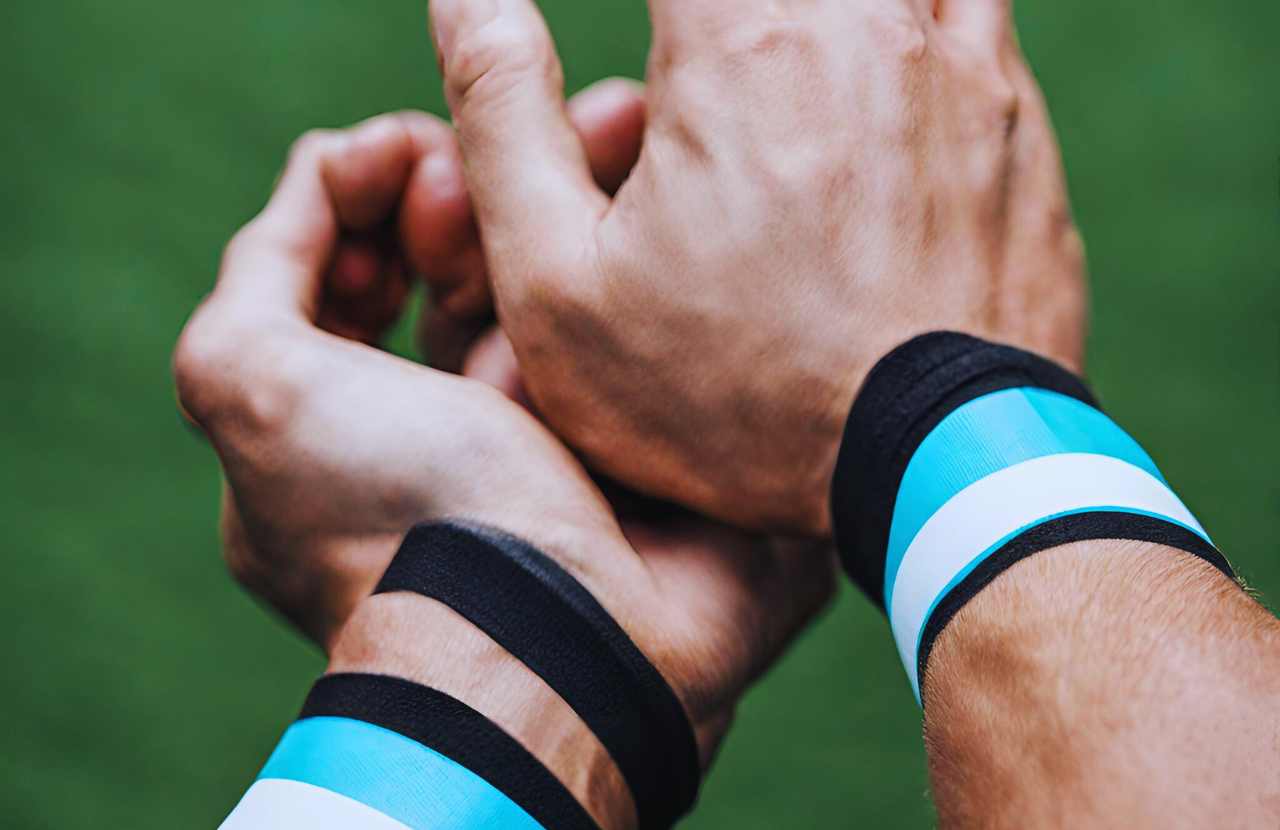Soccer is a sport of skill, strategy, and sometimes mystifying rituals. One such ritual that often sparks curiosity is why soccer players wear tape on their wrists. Is it a fashion statement, or does it serve a more practical purpose?
Soccer players wear tape on their wrists primarily for support and injury prevention. The tape provides additional support to the joints, reducing the risk of sprains or other injuries that can occur from the physical demands of the game.
The tape on soccer players’ wrists is not merely a whim but a precautionary measure to prevent injuries. Despite seeming trivial, it plays a significant role in the athlete’s performance and safety on the field.
Does Taping in Wrists Help for Soccer Player?
Taping the wrists can indeed be beneficial for soccer players. It provides additional reinforcement to the wrist joints, which are subjected to high impact and stress during throw-ins and falls. The tape acts as a flexible brace that minimizes the chance of sprains and dislocations.
Not only does it offer physical support, but it also serves as a psychological aid. When players tape their wrists, they have the added confidence of injury prevention, which can positively influence their performance on the field.
Thus, although it may seem inconsequential from the sidelines, wrist taping is an essential aspect of player preparation and safety in soccer.
Why do Soccer Players Wear Tape on Their Wrists?
Soccer players often wear tape on their wrists for several key reasons:
- Joint Support
- Injury Prevention
- Comfort and Customization
- Ritual or Superstition
- Enhanced grip
Joint Support
In soccer, every part of the body, including the wrists, plays a crucial role in controlling and maneuvering the ball. The tape provides additional support to the wrist joint during these movements, preventing any undue strain or pressure that can lead to injuries.
Injury Prevention
The physical nature of soccer exposes players to a risk of injuries, including sprains and fractures. Taping the wrists can help stabilize them and reduce the risk of such injuries. It acts as a preventive measure, especially for players who have previously suffered wrist injuries.
Comfort and Customization
Each player has unique needs and comfort levels. Some players find taping their wrists provides a more comfortable and secure feel during the game. They can customize the wrapping style and tension of the tape according to their preference.
Ritual or Superstition
Beyond the practical reasons, some players wear wristcapes out of ritual or superstition. Many athletes have rituals they adhere to before or during games, believing these rituals can influence their performance positively.
Enhanced Grip
Another reason why soccer players tape their wrists is to enhance their grip. During a match, the hands can get sweaty, making it challenging to have a firm grip on the ball during throw-ins. The tape absorbs the sweat and provides a better grip, making it easier for the player to handle and throw the ball accurately.
Should You Tape Your Wrists For Football?
Deciding whether to tape your wrists for football ultimately comes down to individual preference, comfort, and past injury history. Taping can provide extra support to your wrists, which can be beneficial in a contact sport like football, where there’s a high risk of injury. It can also improve grip, which is crucial for handling and throwing the ball.
However, some players might find that tape restricts their wrist movement, or they simply don’t like the feel of it. It is recommended to consult with a professional, such as a coach or physiotherapist, to make an informed decision. Remember that taping is a preventive measure and not a substitute for proper technique or strength training.
Final Words
In conclusion, the practice of wrist taping among soccer players is multifaceted, serving practical, comfort, and even psychological purposes. It provides joint support, aids in injury prevention, enhances grip, allows for personal comfort and customization, and sometimes, it’s part of a player’s pre-game ritual or superstition. As such, it plays a significant role in the sport, showcasing the lengths to which athletes go to maintain peak performance and protect their health on the field.

